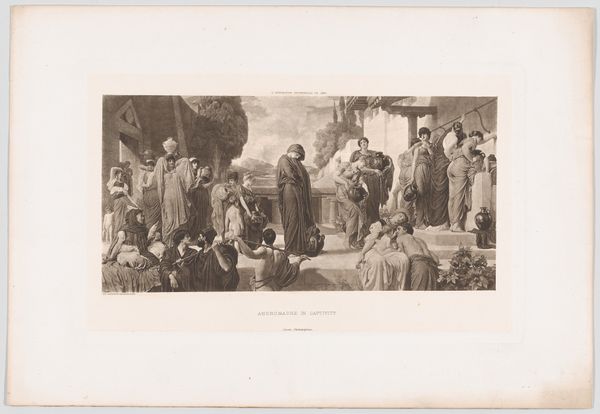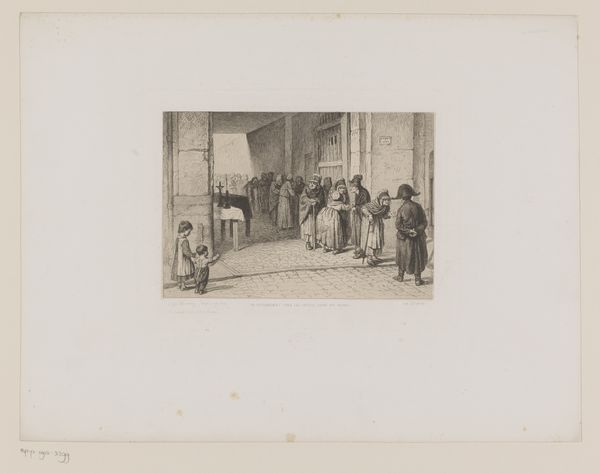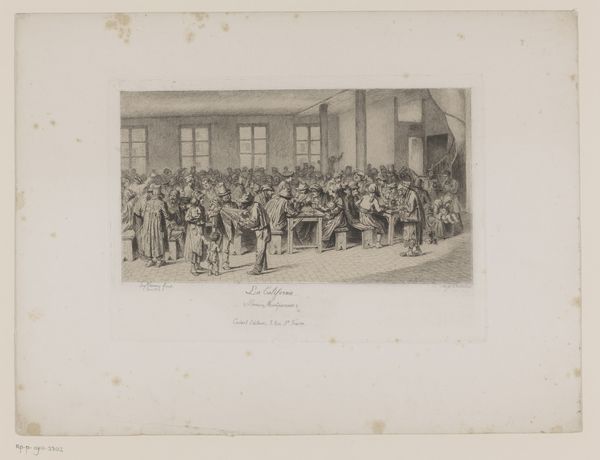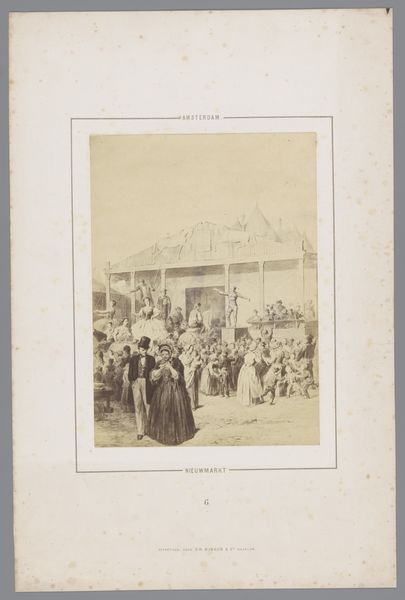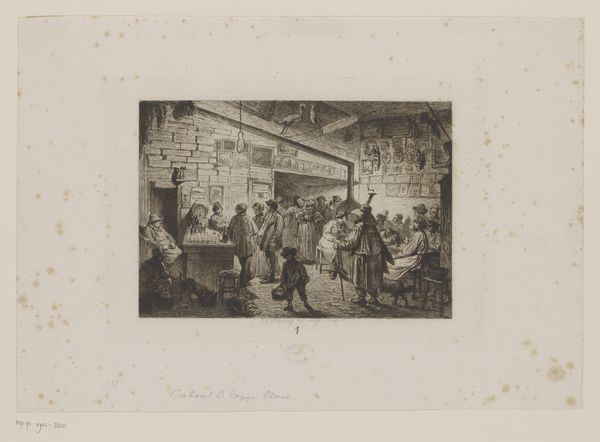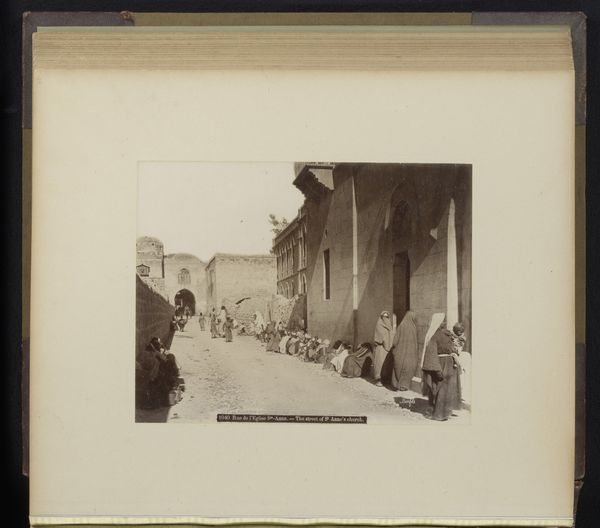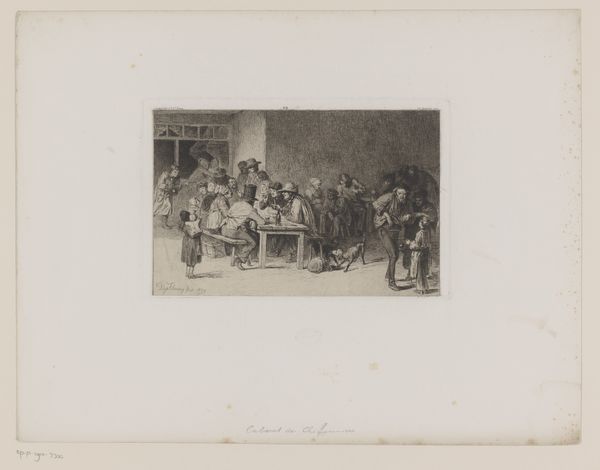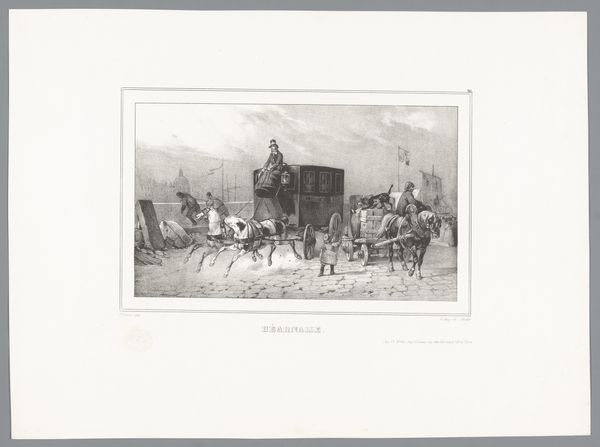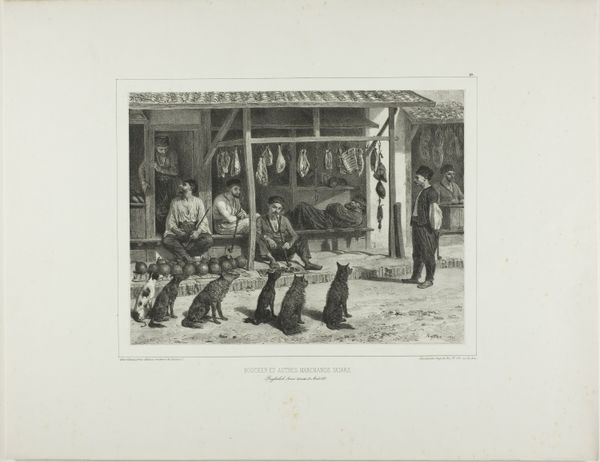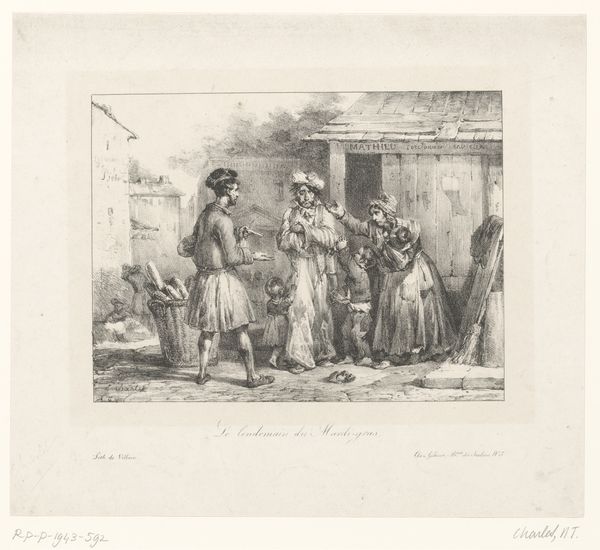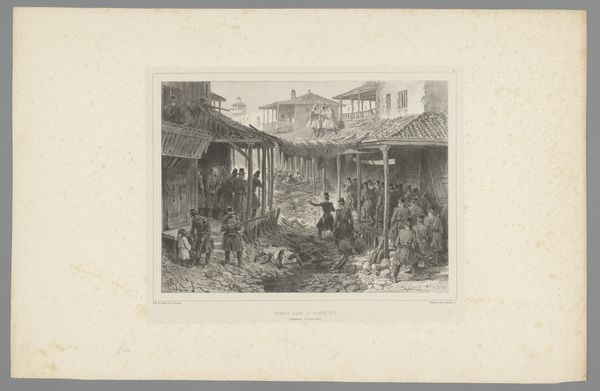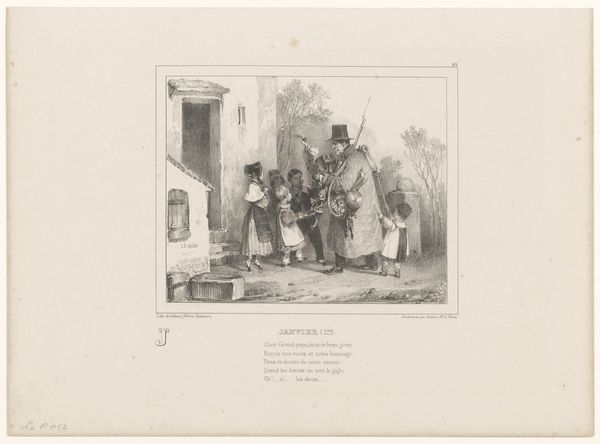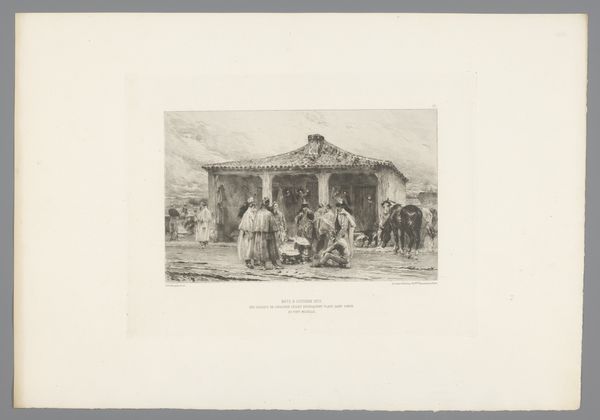
Mannen zittend op een terras van een café in Izmir, 9 november 1837 1848
0:00
0:00
drawing, lithograph, print
#
drawing
#
lithograph
# print
#
landscape
#
orientalism
#
genre-painting
Dimensions: height 317 mm, width 448 mm
Copyright: Rijks Museum: Open Domain
Curator: This is Auguste Raffet's "Men Sitting on a Terrace of a Cafe in Izmir, November 9, 1837," created around 1848. It’s a lithograph, a type of print, offering us a glimpse into a specific time and place. Editor: My initial impression is the bustling yet tranquil atmosphere; a serene tableau bathed in soft light. The density of figures and architectural detail in a monochromatic print creates a remarkable textural richness. Curator: Raffet's Orientalist style invites us to consider the power dynamics inherent in representing the 'Other.' How might this image reflect and reinforce Western perceptions of Ottoman society? What’s also interesting is the specific date included in the title, marking an apparent encounter that likely took place eleven years prior to the actual execution of this print. Editor: Precisely. Note how the strong horizontality established by the architecture is visually reinforced by the lines of seated figures. This deliberate structuring lends a certain sense of order and stillness to a potentially chaotic scene. There is a carefully balanced play between the densely shaded foreground figures and the brighter background that contributes to a clear reading of space. Curator: Yes, the play of light and shadow adds depth, almost a cinematic quality to the scene. But it's impossible to ignore the historical context – France's colonial ambitions were ramping up, shaping artistic depictions and feeding public interest in the exotic "Orient." The figures almost become ethnographic studies, subtly reinforcing assumptions. It speaks to issues of representation and gaze. What are we seeing and why? Who is being seen, and by whom? Editor: Setting aside those contexts for a moment, can’t you also see the artist playing with shape and texture through light? How light, or lack of, creates shadow, and shadow then brings attention to another surface that might otherwise have gone unnoticed. It’s quite well balanced for a seemingly “candid” composition, too. Note how that dark shaded overhang draws the viewer's gaze directly into the illuminated plane of social life. Curator: I concede Raffet does have mastery over shadow. Ultimately, for me, what truly matters is how we can understand these compositions through the politics that allowed for its proliferation. Understanding its original context offers insight into contemporary structures of power. Editor: Indeed, contemplating the interaction between intrinsic aesthetics and complex cultural implications elevates the piece above a mere picturesque documentation of the time. It’s thought-provoking, to say the least.
Comments
No comments
Be the first to comment and join the conversation on the ultimate creative platform.
